Viola is affectionately called pansies, and also tricolor violet for her bright iridescent flowers, similar to multi-colored children's dresses. She is a resident of the southern regions and the beloved "granddaughter" of the adored violet, personifying modesty and innocence. Back in the 16th century, pansies were called the flower of the Holy Trinity, attributing a divine principle to it. And this is not surprising, because the viola from the violet family is a wonderful decoration for our gardens.
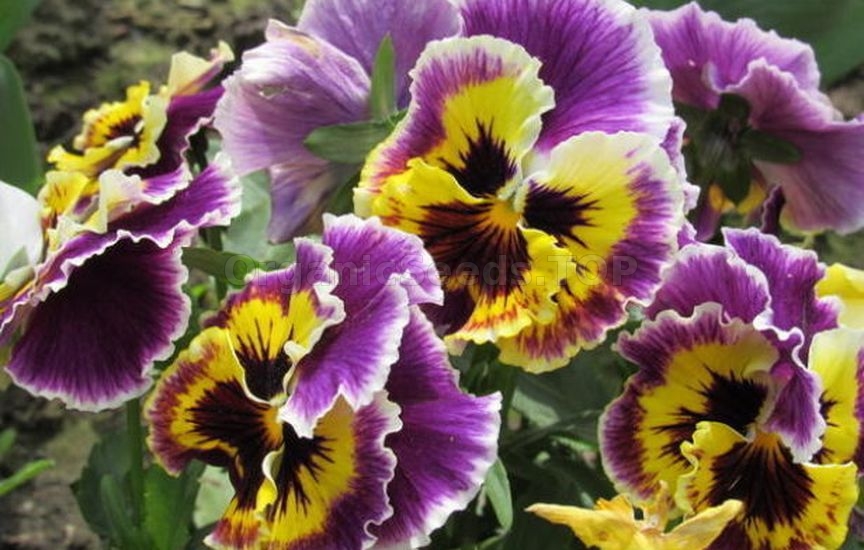 Viola is a low (from 15 to 30 cm) herbaceous plant with a bright single flower on a spur crowning a long peduncle. Flowers come in a variety of shapes and colors: with a predominance of one color scheme or spotted, striped, with one spot; with smooth and wavy edges of the petals and so on, depending on the variety. Some varieties resemble fox muzzles, cheerfully looking at us from the sly))
In total, there are more than 400 species of plants of the violet family and many of their varieties, of which the most decorative is viola - pansies. Viola It has both perennial and annual varieties. In landscape design, a miniature beauty is used to frame borders and ridges, to tamp low shrubs, and its undersized varieties (15-20 cm) look very aesthetically pleasing in rockeries and rock gardens. Planted in a mix, it creates magnificent rainbow meadows in the country house and gives a peculiar flavor to the overall composition of the landscape.
Viola is a low (from 15 to 30 cm) herbaceous plant with a bright single flower on a spur crowning a long peduncle. Flowers come in a variety of shapes and colors: with a predominance of one color scheme or spotted, striped, with one spot; with smooth and wavy edges of the petals and so on, depending on the variety. Some varieties resemble fox muzzles, cheerfully looking at us from the sly))
In total, there are more than 400 species of plants of the violet family and many of their varieties, of which the most decorative is viola - pansies. Viola It has both perennial and annual varieties. In landscape design, a miniature beauty is used to frame borders and ridges, to tamp low shrubs, and its undersized varieties (15-20 cm) look very aesthetically pleasing in rockeries and rock gardens. Planted in a mix, it creates magnificent rainbow meadows in the country house and gives a peculiar flavor to the overall composition of the landscape.
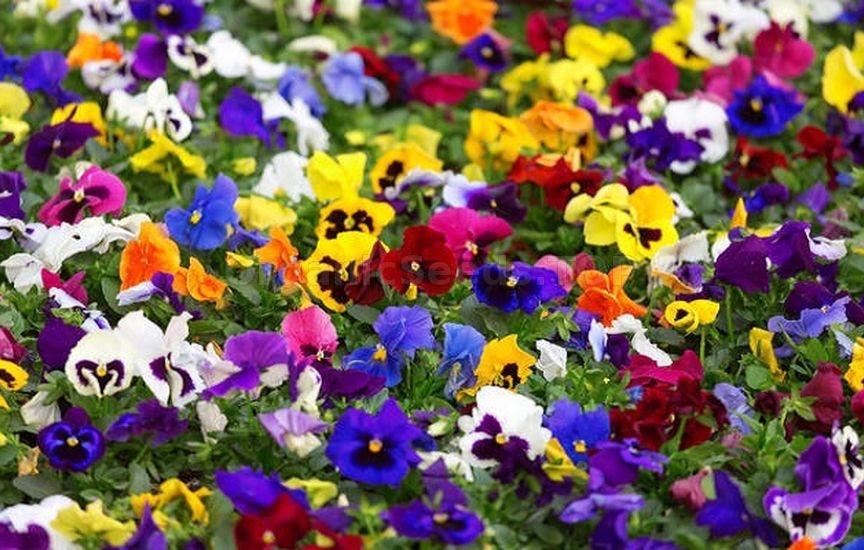 It should be noted that the viola is very unpretentious. It can be transplanted even when it is in bloom. And it blooms either from mid-March to the end of May, or from August until frost (depending on the variety and planting time). He loves open sunny places very much, but at the same time he does not tolerate the sun. Therefore, when choosing her place of residence, make sure that it goes into the shade for at least a few hours a day. In general, it blooms beautifully even in full shade, the only drawback is that the flowers are smaller and slightly paler than those of a viola grown in the sun.
It should be noted that the viola is very unpretentious. It can be transplanted even when it is in bloom. And it blooms either from mid-March to the end of May, or from August until frost (depending on the variety and planting time). He loves open sunny places very much, but at the same time he does not tolerate the sun. Therefore, when choosing her place of residence, make sure that it goes into the shade for at least a few hours a day. In general, it blooms beautifully even in full shade, the only drawback is that the flowers are smaller and slightly paler than those of a viola grown in the sun.
Planting a viola
Viola can be planted as seeds or seedlings. Seeds are sown directly in open ground in early-mid May, at the rate of 50-60 seeds per 1 m of furrow. You can also make small holes at a distance of 5-6 cm from each other and lay 2-3 seeds in each. Before sowing, it is useful to place viola seeds for a day in a solution of zircon or epin.
Deepen the seeds by 0.5-0.7 cm and sprinkle the grooves with earth ground with your fingers, water moderately and lightly mulch the surface with sawdust (this will keep the soil moist). Literally in 5-7 days, the first shoots will appear, which are very desirable to shade (stretch a dark film on top). After 2-3 weeks, the film can be removed.
Similarly, viola seeds are planted for seedlings and indoors. Young shoots dive twice: the first time 5-7 days after planting, the second - after 2-3 weeks according to the scheme: 6x6 cm. And after 1.5-2 months, viola seedlings are transferred to permanent residence in open ground. The distances between the landing holes are 20-25 cm, this is quite enough for its free growth.
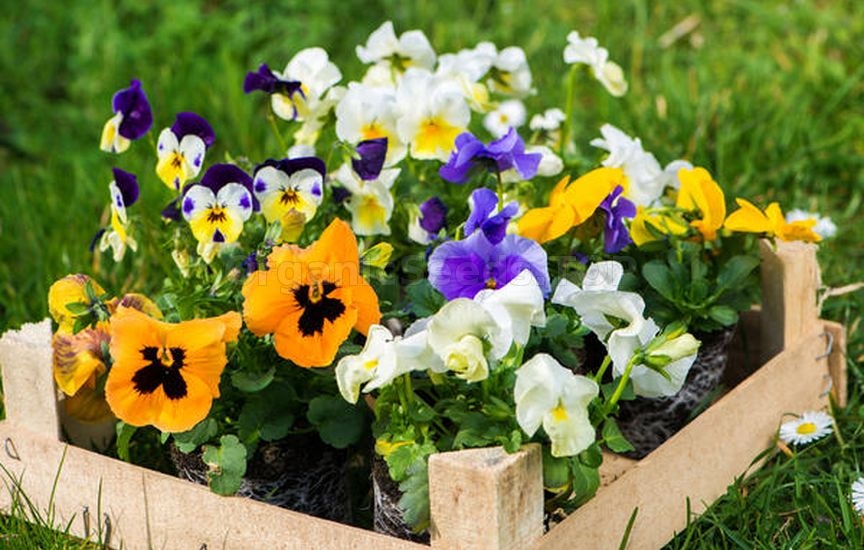 For abundant second-year viola flowering, sow it outdoors in July or August. In the winter, mulch the plants, and in the spring, the viola will already delight you with its amazing flowers. If you want to admire it already in the first year after planting, start germinating seeds for seedlings at the end of February. For growing seedlings, it is better to use a purchased soil substrate for violets.
When planting a viola in open ground, add 0.2 parts of crushed coal to the soil for 1 part of the earth, along with small coal pieces (they will act as drainage ), 0.2 parts of dry bird droppings or manure. Viola, although unpretentious, does not like it very much when the soil "turns to stone", and coal will eliminate this trouble. But this is my personal "recipe" soil for street violets. If you are an adherent of the classic planting style, then the ideal soil substrate for plants of the violet family is soddy land, manure, peat and sand in a ratio of 2:2:2:1.
For abundant second-year viola flowering, sow it outdoors in July or August. In the winter, mulch the plants, and in the spring, the viola will already delight you with its amazing flowers. If you want to admire it already in the first year after planting, start germinating seeds for seedlings at the end of February. For growing seedlings, it is better to use a purchased soil substrate for violets.
When planting a viola in open ground, add 0.2 parts of crushed coal to the soil for 1 part of the earth, along with small coal pieces (they will act as drainage ), 0.2 parts of dry bird droppings or manure. Viola, although unpretentious, does not like it very much when the soil "turns to stone", and coal will eliminate this trouble. But this is my personal "recipe" soil for street violets. If you are an adherent of the classic planting style, then the ideal soil substrate for plants of the violet family is soddy land, manure, peat and sand in a ratio of 2:2:2:1.
 It is also possible to propagate some elite varieties of viola from cuttings and layering, but this method is more suitable for greenhouses than for suburban areas, so I will not mention it in this article.
It is also possible to propagate some elite varieties of viola from cuttings and layering, but this method is more suitable for greenhouses than for suburban areas, so I will not mention it in this article.
Viola Care
Viola loves regular loosening and constantly moistened, because her root system is only 15-20 cm deep into the soil. To prevent her flowering from stopping, try to remove faded inflorescences with seed pods in time. The miniature beauty prefers fertile, moderately moist and well-drained soils, although it will not wither in poor lands.
Viola seedlings should be fertilized every 10 days with a solution of complex mineral fertilizers. And feed adult plants monthly with ammonium nitrate or superphosphate at the rate of 30 g per 1 sq. m of soil. Do not forget to remove harmful weeds in time and make sure that there is no drying out of the soil or stagnant water. In autumn, cover the viola with spruce branches, straw or fallen leaves. By following these simple rules, you will get healthy and strong plants in your country house.
Viola types
Viola tricolor
Viola tricolor (Viola tricolor) 10 to 20 cm high, has large (5-8 cm in diameter) flowers with tricolor petals, of which the top two are usually purple-violet, the lateral ones are slightly lighter, and the bottom ones are usually bright yellow colors. It blooms outdoors from April to October and is the most decorative species of the violet family.
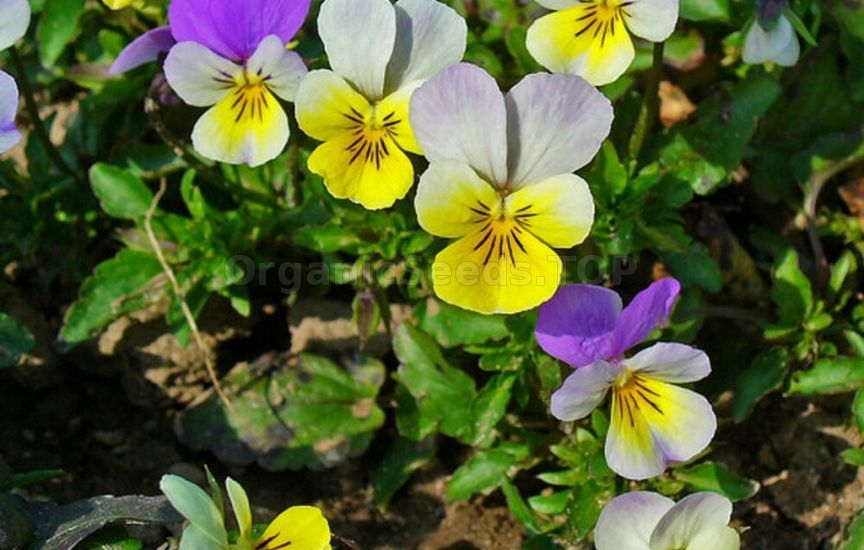
Viola Wittrock
The Viola wittrokiana species combines multiple varieties hybridized with Altai, yellow and tricolor violets. Strongly branched, with large (up to 10 cm in diameter) single flowers. Plant height ranges from 15 to 30 cm (depending on the variety). Usually cultivated as a biennial. Good in microborders and for tamping low growing shrubs.
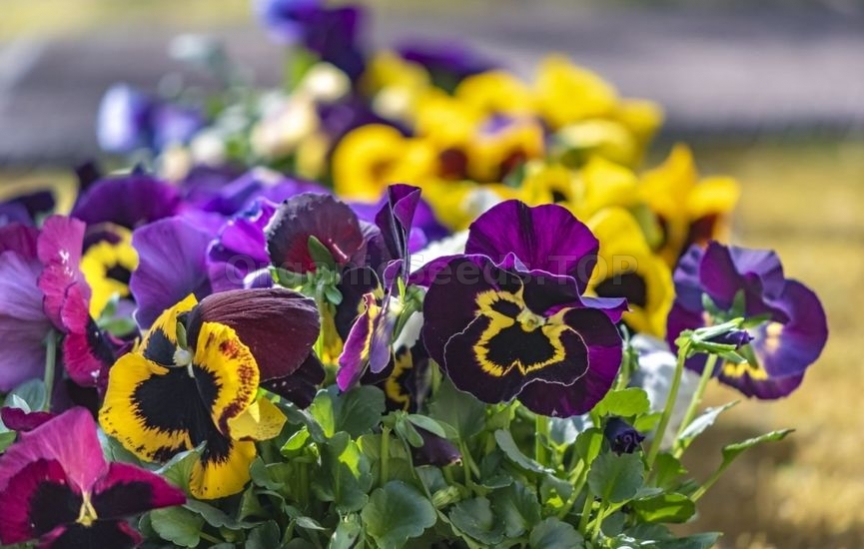
Viola Altai (Viola altaica)
Altai Viola is a decorative perennial up to 20 cm tall with blue-violet or white flowers with blue stripes, “illuminated” with a bright yellow speck. The spur is almost invisible. It blooms twice a season: from late April to mid-June and from August until frost.
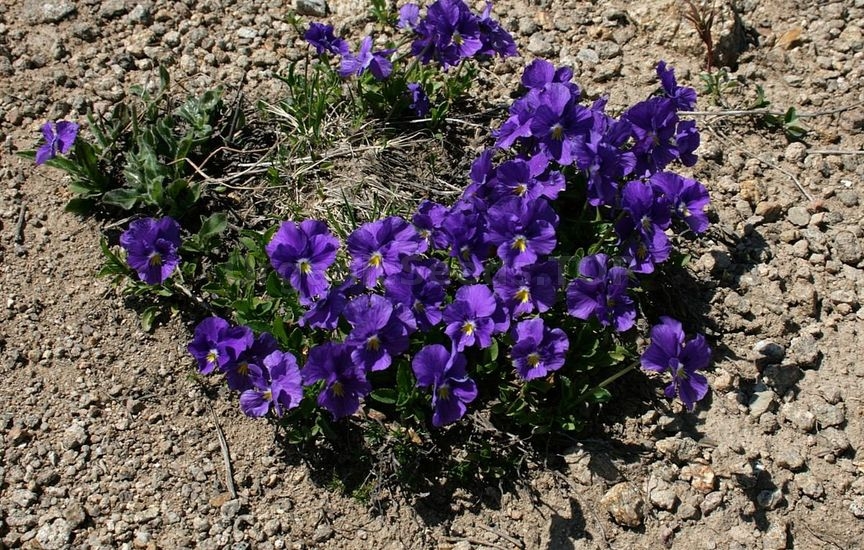
Viola yellow
Viola yellow (Viola lutea) is the most unpretentious species of the entire violet family. The flowers are lemon yellow with a bright spot in the center. Height: from 8 to 15 cm, flowering period from May to July.
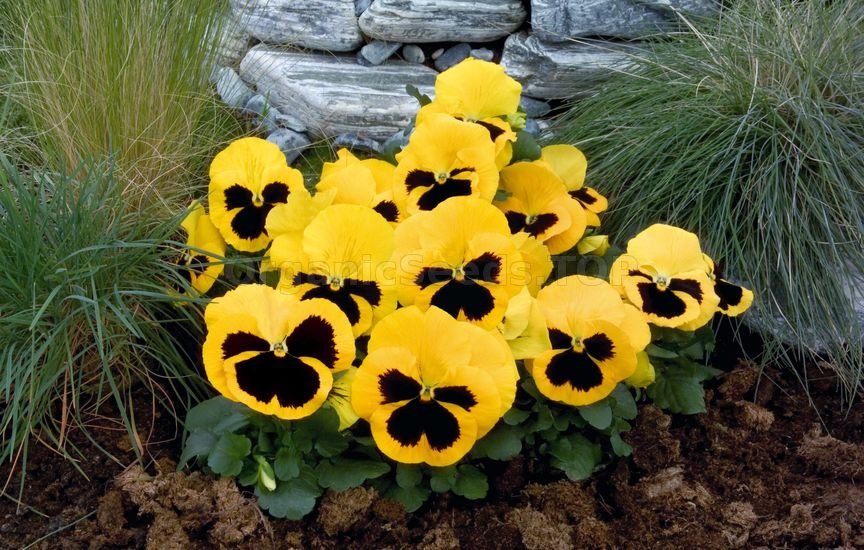 In addition to its decorative qualities, viola (like all plants of the violet family) has excellent medicinal properties and has been used in folk medicine for centuries. Its decoction is used to treat gastritis, bronchitis, laryngitis and many other diseases. It cleanses the blood well and is an excellent expectorant. Infusion of violets is not only useful, but also very pleasant to taste. And with the addition of honey, it is quite capable of replacing our usual morning tea))
In addition to its decorative qualities, viola (like all plants of the violet family) has excellent medicinal properties and has been used in folk medicine for centuries. Its decoction is used to treat gastritis, bronchitis, laryngitis and many other diseases. It cleanses the blood well and is an excellent expectorant. Infusion of violets is not only useful, but also very pleasant to taste. And with the addition of honey, it is quite capable of replacing our usual morning tea))
You may need:
|








